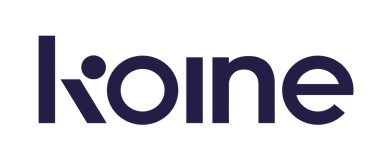
Phil Mochan, co-founder and head of strategy, Koine
What are the market drivers for digital securities?
Phil Mochan: The move to digital securities makes sense for institutional investors when there are clear benefits in reducing risk, improving cost efficiency and improving liquidity. Particularly in this low-return environment, investors must remain competitive, lean and ahead of the game in the search for yields. Property is an industry undergoing transformation due to the increased liquidity digital securities offer. In fact, the industry is facing possible total overhaul as digital securities can deliver something not previously granted to property investors.
There is also a key concept best described as “fluidity”. This is the connection between liquidity and cost (transacting an asset at a much lower cost and within a shorter timeframe than currently). Again, with property, the hiring of lawyers, paying of stamp duty etc., can take several months. If you can transact just by exchanging the rights to the digital security, however, it’s obviously far more cost effective and faster, which makes a compelling reason for adoption. In this way, digital securities deliver more fluidity, alongside liquidity.
What type of digital securities will be adopted initially and where?
PM: In the current environment, where equity is staying private for longer, an IPO is no longer the immediate answer to many companies’ growth strategies. Those who may have listed at a $500 million valuation are now waiting until they’ve grown substantially bigger, say $50 billion. At Koine, we anticipate that these larger equity value private businesses will look to instigate interim liquidity events on their path to growth using digital securities. Such events will have a notable effect on the industry, given the increasing size of the companies involved.
We are also likely to see demand for the digitisation of corporate bonds on the institutional buy-side, arising from insufficient processing of the current bond markets. We see a scenario where in 10 to 15 years’ time all issuances will be digital, to combat these inefficiencies.
Credit funds is another area where we see adoption taking hold, due to better cost efficiencies. It is our view that a lot of banks will want to offload balance sheets and credit portfolios into digital collateralised debt obligations. We see this mainly happening in Europe, where regulatory capital requirements are more forgiving.
What are the barriers to widespread adoption by institutional capital?
PM: Market infrastructure for digital securities is still evolving and until it reaches the same standard as the traditional markets, institutional investors will be hesitant to adopt.
There are three major factors that digital market players must deliver at institutional-grade level. Firstly, the infrastructure to facilitate post-trade activity, including enhanced custody and protection systems. Secondly, a regulatory or licencing framework with a clear set of rules pertaining to digital securities. This is especially problematic due to the relatively slow pace of legislative change in comparison to the evolution of digital assets. Lastly, a business model that is familiar to the existing institutional funds or, where there are changes to it, a model that funds can easily adapt, in order to respond to the new model of digitised funds.
Ultimately, it’s all about being fit at a business model level for institutional capital, complete with governance frameworks. Wide-spread adoption rests squarely on digital securities being able to deliver on these factors.
The good news is that we are seeing this shift start to happen. The Fifth Anti-Money Laundering Directive (5MLD) will come into force in January 2020 – this is the first time that crypto assets will be wrapped into regulatory regimes. From there, we anticipate a migration in attitudes and utilisation of digital assets. It will not be immediate, but the initial embrace is here. With increasing regulation, we hope to witness a single and standardised infrastructure for post-trade of securities arising from digitisation – one that can be applied globally.
Who are the winners and losers from this transformation and what will incumbents have to do to survive?
PM: There are huge benefits to be had by all in the financial industry, it is just a question of who will be able to evolve most effectively.
The traditional custodian community has suffered somewhat, in part due to the huge cost of transforming legacy IT systems for investors’ digital needs. Those who lead the pack in this space are new entrants to the market who can boast ground-up solutions tailor-made for the digital world.
It can also be difficult to attract the right talent to create tomorrow’s solutions. Current market incumbents are starting to face material challenges because of this, with the digitally-savvy gravitating towards newer companies who offer world-class tech systems coupled with flexible culture and workspaces (a common benchmark of employee expectations in today’s working environment).
The scene is set to proclaim clear winners – either the digitally-native like Koine, or the traditional players who are willing and able to adapt through acquisitions or partnerships. As always, in times of significant change or upheaval, visionaries, followed by the incumbents who are willing to change, will be granted victory.
It follows that Koine stands ready and willing to partner with institutions to help ensure that the greatest number of people benefit from such change.
